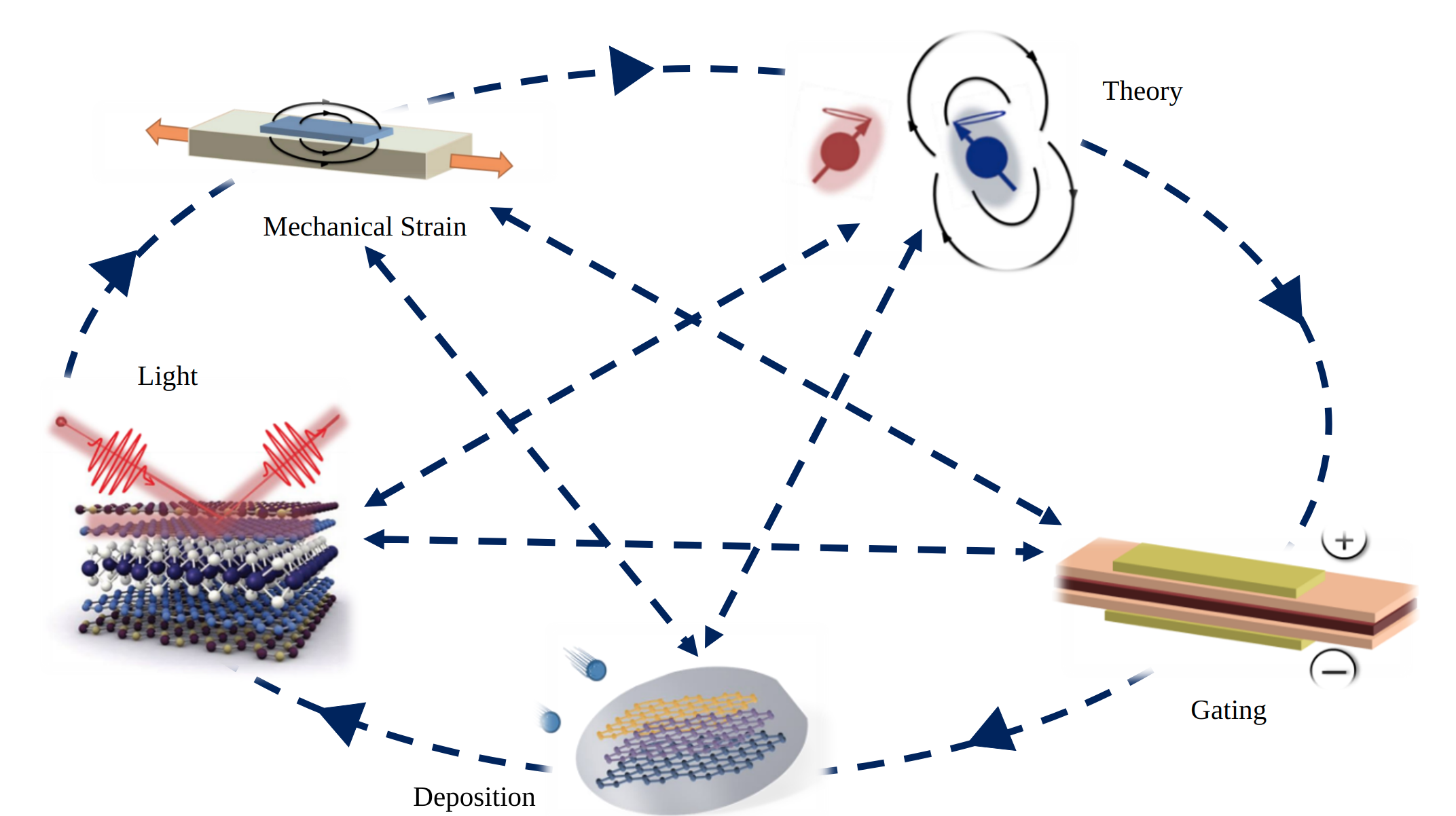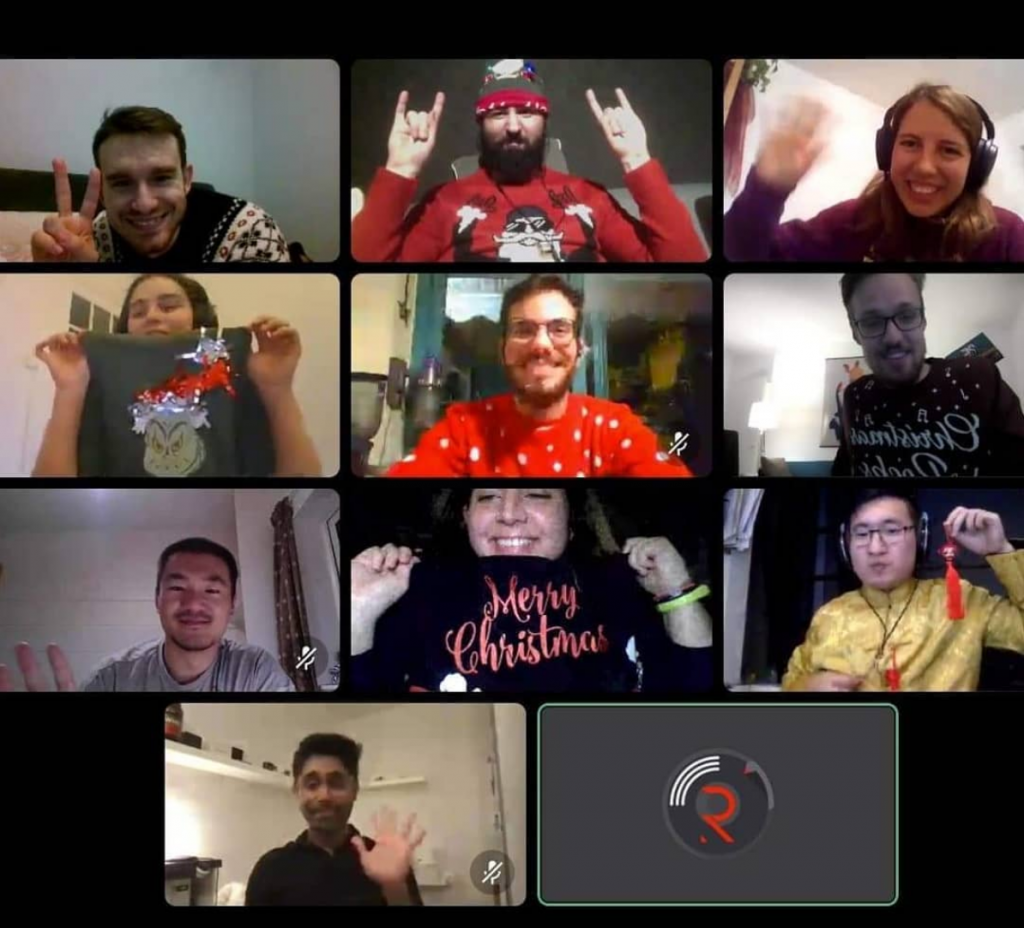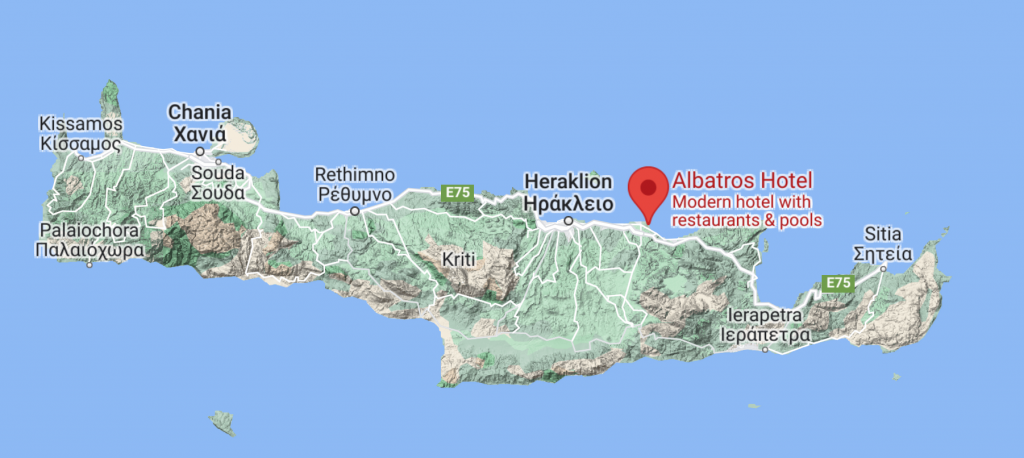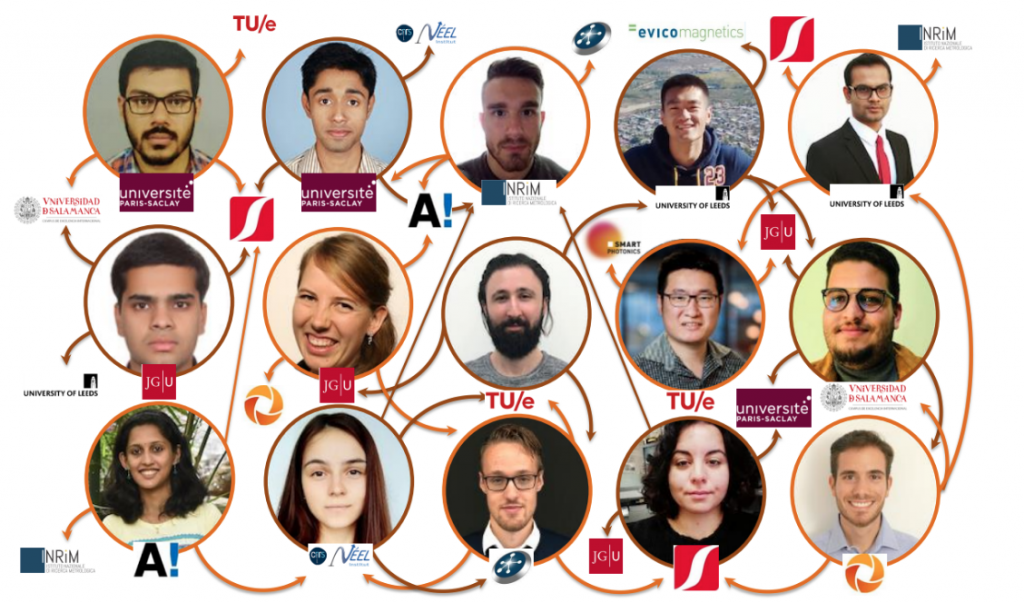About us…
Hello everyone! We are the MagnEFi Network, an International Training Network (ITN) funded by the Marie Skłodowska-Curie Actions programme of the European Commission. We are a network of 15 Students completing their PhDs across Europe and we work in the field of Spintronics.

The broader goal of the project is to study the effects of electric field on magnetic interface phenomena and each one of us specializes in more focused sub-areas of the subject such as: strain, gating or light. We work in separate research facilities, but we move around very often to collaborate and share expertise on the different topics of our projects.
Material Growth:
This part of the consortium involves two industrial partners, Singulus and Spin- Ion Technologies. The aim is to develop and deposit high quality material stacks for electric field manipulation experiments. Partners are provided with layers sputtered with the most advanced tools in the world. Moreover, the magnetic properties of magnetic thin films will be tailored using ion irradiation induced interface engineering.
Theory:
INRIM and Usal are the two institutions that will complement the experimental projects in the network with theoretical modelling of the
effects of electric field in magnetic thin layers. This will be done with the help of micromagnetic simulations. Gate induced charge accumulation, optical effects and piezoelectric strain will be analysed.
Strain:
A promising route to low-power nanomagnetic data storage and computing devices is to apply a voltage to a piezoelectric material that exerts strain on a magnetic thin film and manipulates its properties via magnetoelasticity. The impact of the strain, intrinsically present in thin crystalline materials, is of fundamental importance for
performances of devices like magneto-resistive sensors based on Domain Wall motion.
Light:
Controlling magnetism with light
(femtoseconds laser pulses) could pave the way towards integrating photonics with nano-magnetism for future data buffering. One possibility is to implement all optical switching in nanowires structured on top of a photonic waveguide, which is considered a unique building block for future magneto-photonic integrated circuits.
Gating:
A promising route to low-power nanomagnetic data storage and
computing devices is to apply a voltage to a piezoelectric material that
exerts strain on a magnetic thin film and manipulates its properties via
magnetoelasticity. The impact of the strain, intrinsically present in
thin crystalline materials, is of fundamental importance for
performances of devices like magneto resistive sensors based on
Domain Wall motion.
We are scattered across Europe in 6 universities , 2 research centers and 3 science and technology industrial partners. We had a bit of a rough start with the pandemic and all! We didn’t let this get in our way (we even organized an online Christmas party!) and managed to develop a very close-knit team of highly motivated young scientists. More importantly perhaps, this experience has allowed us to discover many new great friends! As we near the end of our project, in the spirit of what has become a tradition of these ITNs, we decided to organize a Conference event in Crete (Greece). We want to celebrate the end of these years of hard work by coming together and discussing science with many of the leading experts of this sprawling field of physics.

The conference is going to be held in Crete, at the Albatros Hotel located in beautiful Hersonissos between the 10th and the 14th of October 2022. We are going to have many confirmed and emerging scientists presenting exciting talks. At the same time, we plan to invite many talented young scientists to participate with posters and flash presentations about their work.


If you want to know more about us, please go find us at our social media accounts!
